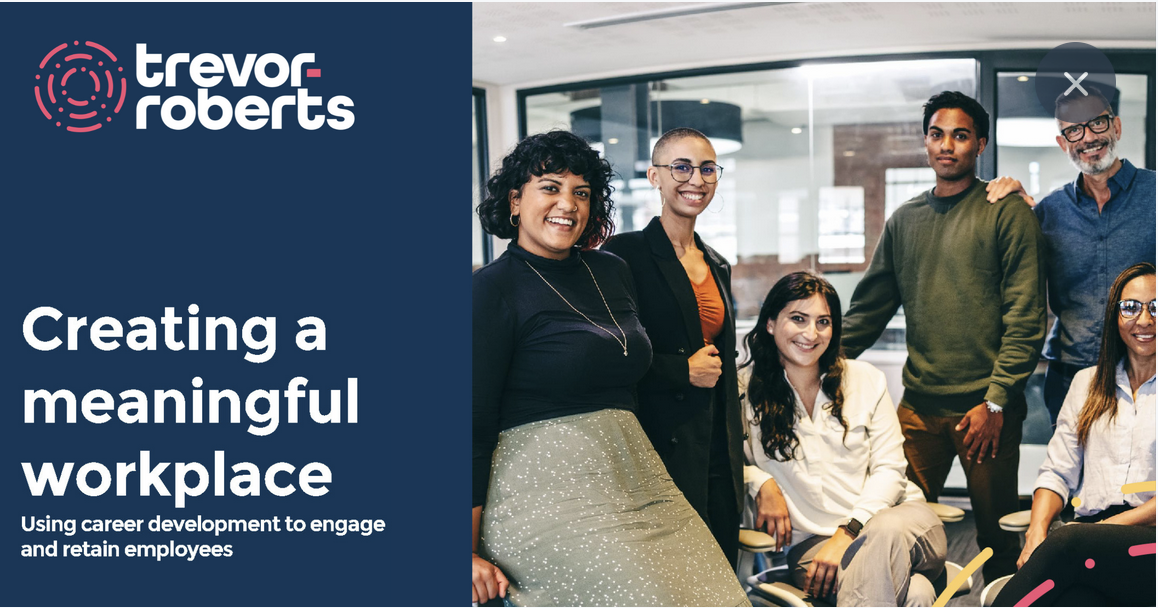For more than two decades, research has shown us unequivocally that greater employee engagement leads to increased productivity. We even know what boosts employee engagement: employees’ relationships with their managers; job clarity; sufficient resources; and a supportive working environment.
So why is it that engagement scores never quite seem to reach the height that we expect? Why is it that despite all the initiatives in place there is a gap in expectations between employees and the organisation?
Research on career management and our experience in working with hundreds of organisations highlight two reasons:
- Organisations are not clear on why career development is important: in terms of increasing the degree of connection, commitment and engagement of employees with their organisations, and many organisational career development practices are haphazard, sporadic or focussed more on individual performance and learning than on career development.
- The rapid rise of uncertainty in the labour market: has left people struggling to understand their employment security and how to make sense of their career into the future.
Career development programs and a sense of identity
Despite the apparent benefits of career development programs for increasing employees’ sense of certainty and engagement, many organisations’ talent management or people development strategies focus exclusively or mostly on matching employees’ skills to the needs or tasks of the organisation. A people strategy that combines this approach with structured career development practices will better position organisations to win the hearts, minds and discretionary effort of their employees, in addition to their skills and capabilities.
Let me explain how.
Work is an important part of a person’s identity. We often describe ourselves as an engineer, a nurse, a manager. This is called ‘occupational identification’ and is particularly salient for those in clearly defined professions. An equally important sense of identity comes from our organisational identification, that is, the sense of belonging to a given organisation. When we feel part of something greater than ourselves, we increase our cooperation, effort, participation and organisationally beneficial decision making. Similarly, our intrinsic motivation, task performance, information sharing and commitment increases.
Identity is important, as through our identification we derive a sense of meaning from our work. This includes meaningfulness at work (derived from identifying with a collective) and meaningfulness in work (derived from a connection with the work itself). Individuals that connect with their work as well as their organisation derive the greatest sense of meaning and therefore productivity and commitment.
Career development helps to create this connection.
Designing a career development program
The first step in designing a career development strategy is to explicitly state the organisation’s perspective on careers which can be represented along a continuum. On the one side, the organisation is in charge of a person’s career development. Common among very large or old organisations, this perspective results in policies and practices that attempt to bind the individual to the organisation through developmental experiences, secondments, golden handcuffs and a strong sense of identity with the organisation. In one multinational company, the talent pool is reviewed by the senior executives once a year in London and decisions are made about where each person should be posted for the next few years across their global operations. The individual has no say in the process.
The other end of the continuum is where career is wholly the individual’s responsibility. The organisation takes a more ‘hands-off’ approach, leaving development and direction up to the individual. This approach dominated the early 2000’s with the popularisation of concepts such as the ’4-hour work week’ by Tim Ferriss and ‘Free-Agents’ by Daniel Pink.
More contemporary approaches assume a degree of shared responsibility for careers between organisations and employees. Nonetheless, there are still differences between organisations in terms of how much ownership they assume and the degree of support they provide to employees.
Clarifying the organisation’s perspective on careers is critical as it determines which practices and policies are put into place. The organisation’s philosophy – what we call perspective – on careers drives the policies and practices that are then implemented. If an organisation’s perspective is genuinely that people matter then the career development initiatives will be extensive to reflect this view. However, there is no one off-the-shelf product for career development. It depends on the organisation’s strategic direction; perspective on careers; values base; and maturity of talent management practices.
Career Development programs should be tailored
Career development programs, as with employee development programs, must be nuanced and tailored to individual needs and stages of career. Amy Wrzesniewski and her colleagues’ research on careers found that people have different conceptions of work:
- Some saw work as a job, as a means to an end and were comfortable putting in a hard days work then going home.
- Others saw work as a career who held a deep personal investment in their work and deriving a sense of achievement both objectively (through material rewards, promotion) as well as subjectively (through a sense of esteem and meaning).
- The third category are those who see work as a calling whereby work and life are inseparable. Work is done solely for the fulfilment it brings to the person, not for other rewards.
This research highlights why development practices are sometimes not well received by employees. For some people, learning something at a course just isn’t motivating! Career development initiatives need to be sufficiently nuanced to appeal to those from all three perspectives. It needs to be flexible so that employees can choose the degree to which they want to be involved in career development while still meeting the minimum growth and development that the organisation requires from its staff to remain nimble and adaptable to the changing market conditions.
Uncertainty and its relevance to career development
As the world of work continues to change at a rapid rate, it is clear that we will not return to the zenith of employment security reached in the mid 21st century. In fact, I argue that many people still underestimate the degree of uncertainty that constitutes a modern career and that the ability to thrive in this uncertainty will define success in the next century for both organisations and their employees.
Take, for example, the automation of work. Rapid advances in artificial intelligence, robotics and connectivity is radically altering how work is performed. Mining automation is a great example where trucks are being remotely controlled from thousands of kilometres away in the comfort of an air-conditioned office, substantially altering the role of the truck operator. Australia’s Future Workforce report produced by CEDA published research showing that 30-40% of jobs will be automated in the coming decade. This poses a challenge to the individuals whose roles are automated (what do I do now?) and to organisations in terms of reskilling employees from one job to another to ensure that their organisational knowledge and commitment is retained.
These trends mean that individuals can no longer expect clearly identifiable career paths mapped out by their organisation, adding to the sense of uncertainty in their careers. The downsizing and delayering strategies of the 1980s have continued and the 2000-2010 decade saw a significant number of multi-national companies collapse (for example, Enron and Lehman Brothers). These events have contributed to an increasingly volatile and uncertain labour market, further undermining individuals’ sense of employment stability and leaving employees confused about how they can build a successful and satisfying career within their organisations. In turn, we see an increase in people jumping from job to job or, worse, staying in a job and being disillusioned - the working wounded. In such an environment, it would seem that organisations who help their employees to resolve this uncertainty and to see a future for themselves within the organisation, will create and retain a more engaged workforce.
In this way, we argue that career development programs should be a key part of any talent or people development strategy.
Why is career development important?
In the uncertain world in which we now work, individuals are looking for a sense of direction in their career and an understanding of what a successful career is to them. This is an important part of employee engagement.
Career development programs must help employees build a sustainable, future-proof and adaptable approach to the management of their careers.
Career development is the link between an individuals’ drive and motivation and the organisation’s talent management strategy. An engaged workforce with a pipeline of talented leaders requires a career development strategy.
%20-%20Copy%20(2).jpg)
Edwin is the CEO of Trevor-Roberts and has spent the last 2 decades exploring how people find meaning through their work. He is also Chair of the Advisory board at the Centre for Work, Organisation, and Wellbeing at Griffith University.












